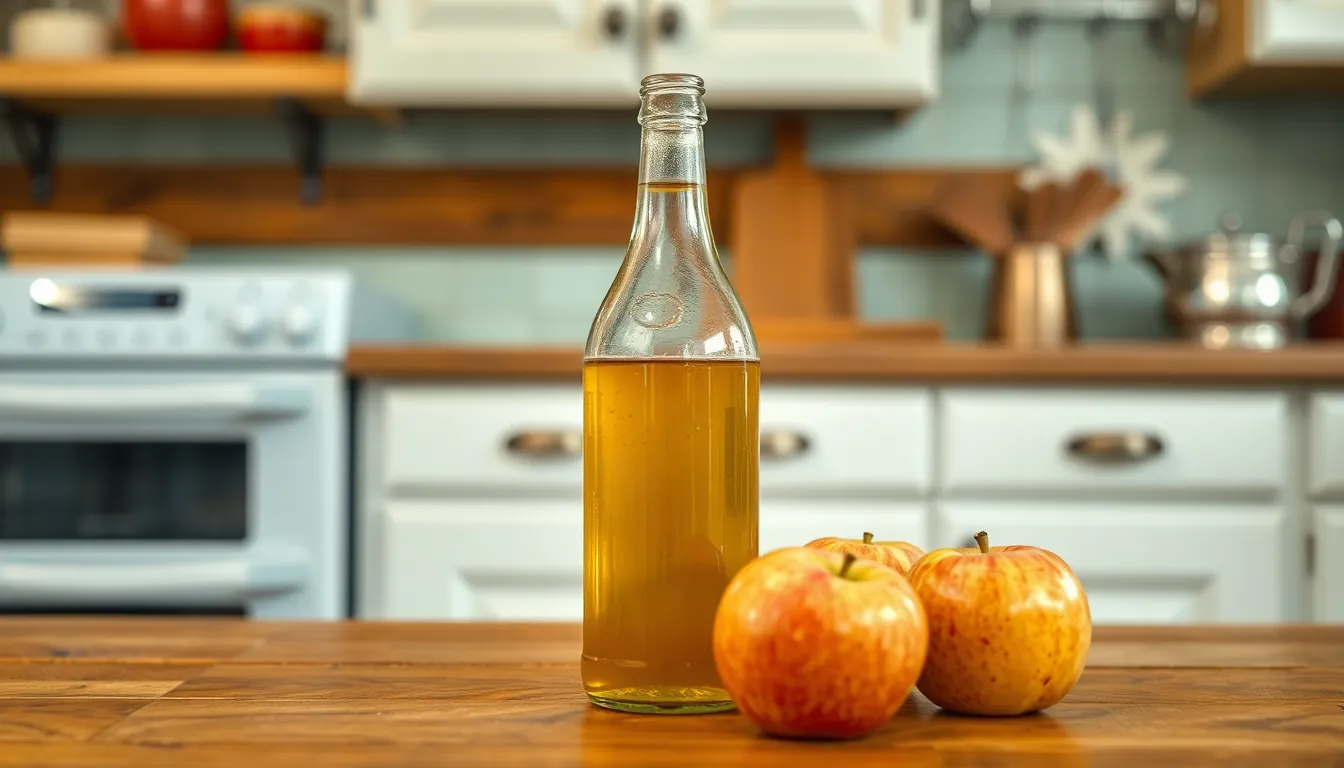Table of Contents
ToggleApple cider is a fall favorite that brings warmth and nostalgia, but how long can you enjoy that delicious liquid gold before it turns into a science experiment? Knowing the shelf life of apple cider can save you from a potential kitchen catastrophe. After all, no one wants to sip on something that’s gone bad and find themselves in a pickle—especially when they were hoping for a cozy evening by the fire.
Whether it’s fresh, pasteurized, or hard cider, each type has its own timeline. Understanding these nuances not only helps keep your taste buds happy but also ensures you’re not playing a risky game of “Guess That Smell.” So let’s dive into the world of apple cider and uncover just how long you can savor that sweet, tangy goodness without fear of unwelcome surprises.
Understanding Apple Cider
Apple cider comes in various forms, each with unique characteristics and shelf lives. Knowing the differences aids in safe consumption and enhances the drinking experience.
Types of Apple Cider
Fresh cider appears unfiltered and untreated, offering a rich, pure apple taste. Pasteurized cider undergoes a heating process, extending its shelf life while maintaining flavor integrity. Hard cider, fermented with yeast, contains alcohol and generally lasts longer than its fresh counterpart. All types possess distinct qualities, influencing choices for various occasions.
Nutritional Value of Apple Cider
Apple cider provides essential nutrients contributing to a healthy diet. Rich in antioxidants like polyphenols, it supports overall wellness. Vitamins A and C are present, enhancing immune function. One cup of fresh apple cider typically contains around 120 calories, with no fat. Additionally, natural sugars in cider provide a quick energy boost. Understanding these nutrients encourages thoughtful consumption choices.
Shelf Life of Apple Cider

Understanding the shelf life of apple cider helps ensure safe consumption. Different types of cider possess unique expiration timelines.
Unopened Apple Cider
Unopened fresh cider remains good for about 7 to 10 days in the refrigerator. Pasteurized cider can last significantly longer, typically around 1 to 2 weeks, while hard cider lasts up to 1 year if stored in a cool, dark place. It’s essential to check the packaging for expiration dates or “best by” guidance. Fresh cider, lacking preservatives, spoils faster than its pasteurized and fermented counterparts. Proper refrigeration slows the growth of bacteria, thus extending freshness. This proactive approach keeps unopened cider enjoyable longer.
Opened Apple Cider
Opened apple cider has a shorter lifespan and should be consumed within 3 to 5 days. After opening, refrigeration plays a crucial role in maintaining quality. Even pasteurized cider degrades over time once exposed to air. Hard cider, on the other hand, can last for several weeks after opening. It’s vital to seal containers tightly to minimize oxidation and preserve taste. Signs of spoilage include an off smell, unusual cloudiness, or changes in flavor. These indicators warrant caution when considering consumption.
Storage Methods
Apple cider storage methods significantly impact its quality and shelf life. Proper techniques help maintain flavor and freshness.
Refrigeration
Refrigeration plays a crucial role in prolonging the life of apple cider. Fresh cider lasts about 7 to 10 days in the refrigerator, while pasteurized cider typically lasts 1 to 2 weeks when chilled. Always store both types in airtight containers to reduce exposure to air, which can cause spoilage. Keeping the refrigerator temperature at or below 40°F helps ensure the cider stays fresh. For opened cider, consumers should aim to drink it within 3 to 5 days. Refrigeration remains vital for maintaining the quality of pasteurized cider as well, as it slows down the fermentation process and prevents off-flavors.
Freezing Apple Cider
Freezing offers another effective storage method for apple cider, allowing longer preservation. It’s essential first to pour cider into freezer-safe containers, leaving space for expansion as the liquid freezes. Frozen apple cider can last up to a year. Thawing is straightforward; simply place the container in the refrigerator overnight. People can also use warm water or a microwave for quicker defrosting, though these methods may alter flavor slightly. Freezing retains nutritional value, providing ongoing access to the drink’s antioxidants and vitamins throughout the year. Consider using frozen cider in recipes, where the texture may not be critical.
Signs of Spoilage
Identifying spoilage in apple cider is essential for safe consumption. Recognizing the signs of spoilage ensures a delightful cider experience.
Visual Indicators
Cloudiness in apple cider often signifies spoilage. Mold formation or sediment at the bottom of the container highlights potential issues. Changes in color, particularly a shift to a darker hue, indicate deterioration that often accompanies freshness loss. Bubbles or fizz can suggest fermentation, which is common in hard cider but may indicate spoilage in fresh or pasteurized varieties. Clear signs like these warrant closer inspection before consumption.
Smell and Taste Tests
Foul or off-putting odors often signal that cider is no longer good. An unpleasant sour smell usually indicates spoilage or fermentation. When tasting, any noticeable sourness or bitterness suggests the cider has turned. Fresh apple cider should deliver a crisp apple flavor, with any deviation from that indicating potential spoilage. Trusting smell and taste tests greatly aids in making safe consumption choices.
Best Practices for Maximizing Freshness
Maximizing the freshness of apple cider involves implementing effective storage techniques and utilizing cider before its expiration. These practices ensure a delightful cider experience.
Proper Storage Techniques
Store apple cider in airtight containers to maintain its quality. Keeping cider in the refrigerator at or below 40°F significantly slows spoilage. For long-term preservation, consider freezing cider in freezer-safe containers, as it can last up to a year. Thawing works best in the refrigerator to preserve flavors and nutrients. Avoid exposure to sunlight, since light can degrade the cider over time.
Utilizing Apple Cider Before Expiration
Utilize fresh apple cider within 7 to 10 days for the best taste. Pasteurized cider has a shelf life of 1 to 2 weeks, making timely consumption vital. Incorporate it into recipes, such as cider donuts or marinades, before spoilage occurs. Regularly check for signs of spoilage, as recognizing changes like cloudiness enhances safety. If cider is opened, consume it within 3 to 5 days, ensuring enjoyment of its optimal flavor.
Knowing how long apple cider lasts is essential for enjoying its rich flavors safely. By understanding the differences between fresh, pasteurized, and hard cider, individuals can make informed choices about storage and consumption. Proper refrigeration and effective storage methods can significantly prolong freshness.
Being aware of spoilage signs ensures that cider remains a delightful addition to cozy gatherings. With these insights, cider enthusiasts can confidently savor their favorite beverages while reaping the nutritional benefits that apple cider has to offer.




